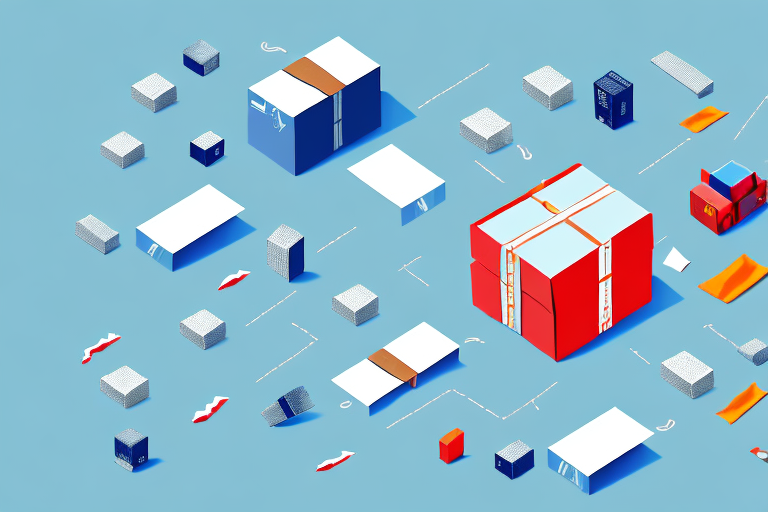As the global supply chain continues to expand and diversify, transporting goods has become a critical aspect of modern business operations. However, whenever goods move from one place to another, there are risks involved that can result in damage, loss, or theft. Understanding these risks and taking proactive measures to mitigate them is essential for businesses looking to ensure the safe and secure movement of their goods.
Understanding Risks in Goods Transportation
Transporting goods involves various types of risks that can significantly impact business operations. These risks include:
- Physical Damage: Goods can be damaged due to mishandling, accidents, or environmental factors during transit.
- Theft and Pilferage: High-value items are particularly susceptible to theft, especially in routes with poor security.
- Environmental Damage: Spills or leaks from hazardous materials and emissions from transportation vehicles can harm the environment.
- Delays: Unforeseen circumstances such as weather conditions or logistical issues can cause delays in delivery.
Factors Affecting Transportation Risks
The level of risk involved in transporting goods can vary based on several factors:
- Mode of Transportation: Whether goods are transported by road, rail, air, or sea affects the type and extent of risks.
- Nature of Goods: Fragile, perishable, or hazardous goods require specialized handling and transportation methods.
- Transportation Route: Routes passing through high-risk areas or regions with unstable political climates increase the likelihood of theft or accidents.
- Packaging: Proper packaging is crucial in preventing damage and ensuring the integrity of goods during transit.
Effective Risk Management Strategies
Implementing robust risk management strategies is vital for safeguarding goods during transportation. Effective risk management involves:
- Risk Identification and Assessment: Analyzing the supply chain to identify potential vulnerabilities and assessing the likelihood and impact of each risk.
- Mitigation Measures: Implementing measures such as enhanced packaging, security protocols, and alternative routing to minimize identified risks.
- Continuous Monitoring: Utilizing tracking technologies to monitor the movement and condition of goods in real-time.
- Training Personnel: Ensuring that transportation personnel are well-trained in handling goods and aware of security measures.
Best Practices for Securing Goods
To further enhance the security of goods in transit, businesses should adopt the following best practices:
- Proper Securing Materials: Use of high-quality securing materials to prevent shifting or damage during transportation.
- Sealed Containers: Employing sealed containers to protect goods from environmental factors and unauthorized access.
- Clear Labeling and Documentation: Proper labeling ensures that goods are handled correctly and reduces the risk of mishandling.
- Reliable Transportation Providers: Partnering with reputable transportation companies that have strong safety and security records.
Legal and Insurance Considerations
Compliance with legal obligations and having adequate insurance coverage are critical components of risk management in goods transportation.
- Regulatory Compliance: Adhering to safety regulations, especially when transporting hazardous materials, to prevent legal repercussions.
- Insurance Coverage: Securing appropriate insurance policies to cover potential losses or damages during transit.
Insurance Requirements
Businesses should ensure they have the following types of insurance:
- Liability Insurance: Protects against damages or injuries caused by the transportation of goods.
- Cargo Insurance: Covers the value of goods in case of loss, theft, or damage during transportation.
Leveraging Technology for Risk Management
Advanced tracking and monitoring technologies play a significant role in enhancing the security and efficiency of goods transportation.
- GPS Tracking: Provides real-time location data, enabling businesses to monitor shipments and optimize routes.
- Environmental Sensors: Monitor temperature, humidity, and other conditions to ensure goods remain within desired parameters.
- Advanced Monitoring Software: Offers comprehensive analytics and alerts for any deviations or incidents during transit.
Benefits of Technology Integration
Integrating technology solutions offers several advantages:
- Enhanced Visibility: Real-time data allows for proactive decision-making and quick response to issues.
- Improved Efficiency: Optimizing routes and schedules reduces delays and operational costs.
- Increased Security: Immediate alerts on unauthorized access or environmental breaches enhance the security of goods.
The Economic Impact of Risk Management
Failure to manage risks in goods transportation can lead to substantial financial and reputational losses.
- Direct Financial Losses: Damage or loss of goods results in immediate financial setbacks.
- Operational Delays: Disruptions in the supply chain can lead to delays in fulfilling orders, affecting customer satisfaction.
- Legal Penalties: Non-compliance with regulations can result in hefty fines and legal actions.
- Reputational Damage: Incidents during transportation can tarnish a company's reputation, leading to loss of customer trust.
Case Studies: Lessons from Real-Life Incidents
Examining real-life examples of goods in transit incidents highlights the importance of effective risk management:
- Heavy Goods Theft: In 2023, a major electronics shipment was stolen during transit in a high-risk area, resulting in losses exceeding $2 million.
- Environmental Spill: A chemical spill occurred due to container leakage, leading to environmental damage and regulatory fines.
- Delayed Deliveries: Severe weather conditions caused significant delays in perishable goods delivery, impacting food safety and business revenues.
Future Trends in Safe and Secure Cargo Transport
The cargo transport industry is continually evolving with innovations aimed at enhancing safety and security:
- Blockchain Technology: Enhances transparency and traceability in the supply chain, reducing the risk of fraud and improving accountability.
- Autonomous Vehicles: The use of drones and self-driving trucks can minimize human error and increase efficiency.
- Smart Packaging: Incorporates sensors and IoT devices to monitor the condition of goods in real-time.
- Green Transportation: Adoption of eco-friendly transportation methods reduces environmental risks and aligns with sustainability goals.
Adopting Innovations
Businesses should stay informed about emerging technologies and consider integrating them into their transportation strategies to stay competitive and enhance risk management.
Conclusion: The Importance of Proactive Risk Management
Managing the risks associated with goods transportation is essential for protecting a business's financial interests, reputation, and supply chain integrity. By understanding the various types of risks, implementing effective risk management strategies, complying with legal and insurance requirements, and leveraging advanced technologies, businesses can ensure the safe and secure movement of their goods. Proactive risk management not only minimizes the likelihood of damage, loss, or theft but also contributes to operational efficiency and customer satisfaction, driving long-term business success.




















